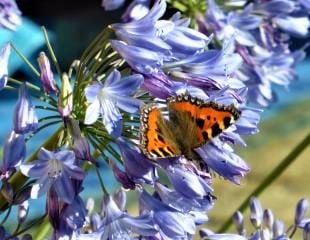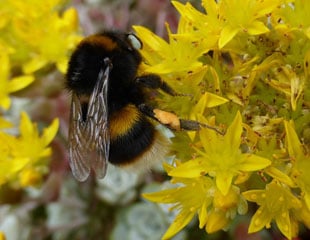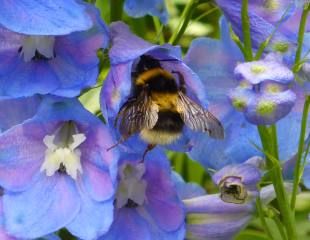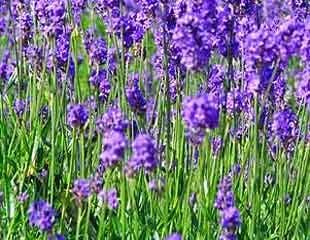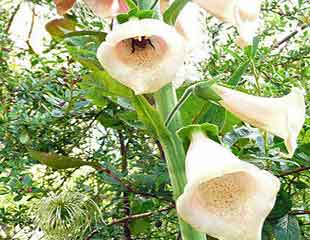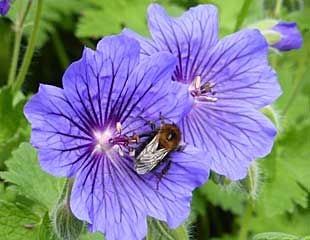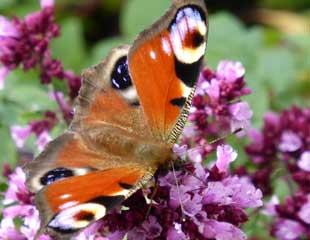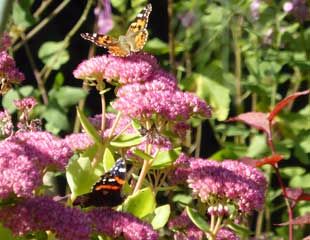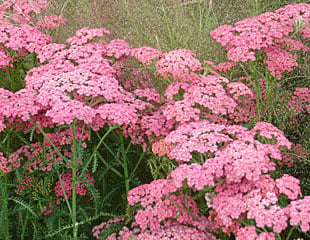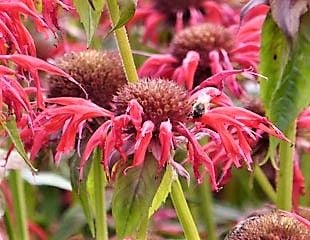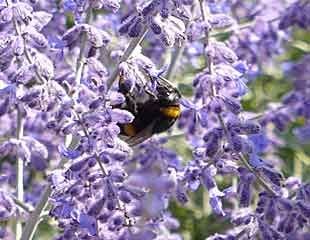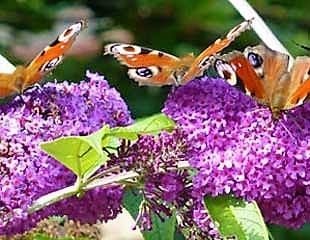Wildlife friendly plants for Bees and Butterflies
Gardens can be a haven for bees and butterflies by planting shrubs and flowers known to be attractive to bees, butterflies, and pollinators. Maintaining a natural area with nettles, grasses and wildflowers is good, but not always practical. There are many plants which look good and are attractive to bees and butterflies.
Bees and butterflies seek out nectar. It's all about food. If you can plant to provide flowers from very early spring when the first solitary bees emerge to late autumn, you will have bees in your garden throughout the season.
There are a wide range of plants, shrubs and herbs listed below on this page which are attractive to bees, butterflies, and pollinators which are also easy to grow and provide great colour in the garden.
If you want to identify what sort of bee is in your garden, this is an excellent free guide from Friends of the Earth with good clear descriptions and illustrations.
There are six pages with information about plants and shrubs which are attractive to bees and butterflies.
Check out:
There are also plants attractive to bees, and further information on plants attractive to butterflies.
Butterflies often prefer a large flower head to land on, bees climb into foxgloves but like open flowers as well. Bees see colour differently, and are attracted to blues (and yellow which they see as blue) Most herbs are bee magnets. Plant oregano and chives and they will be a mass of bees and insects.
There are some plants which strongly recommended: the common Buddleja which is known as the butterfly bush, and it really does get covered in butterflies. Its flowers are aromatic, similar to many herbs. Equally attractive is the late summer flowering Sedum ideal planted around the base of a Buddleja to provide a butterfly feast.
Bees cannot get enough of Oregano, Alliums, Foxgloves and Veronicastrum, see the image at the foot of this page and if you look closely, you will see the bees dotted on the plant. There are more ideas about plants for bees.
Bees and Butterflies in the Veg plot
You may think to attract pollinators and butterflies into your garden its only flowering plants and shrubs, wrong! Most bees and butterflies are keen on veg flowers, as these videos show.
This is a lovely onion flower, as a case in point being visited by a bee and what looks like a Speckled Wood. Bees also love chives, and are the principal pollinators in a veg plot.
Plants for Bees and Butterflies
Bee friendly lavender is always a hit with bees and gardeners alike. It is easy to grow in the right conditions, dry and well drained. Lavender looks lovely along a path, equally mixes well in a border. Advice on How to grow Lavender
Foxgloves
Digitalis the common foxglove is easy to grow and shade tolerant. Bees will visit climbing inside the trumpet flowers after nectar. Foxgloves are biennial self seeding plants.
Oregano
Oregano like all herbs, are magnets for butterflies and bees. If you only have space in your garden for one herb, Oregano is the most attractive to pollinators.
Achillea
Achillea bees like the large, flat headed flowers which are long lasting.
Monarda
Monarda is known as Bee Balm is another very aromatic plant which buzzes all summer when in flower.
Buddleja
Butterflies really do go mad for Buddleja which is an easy to grow shrub with scented flowers. No longer a thug, there are Buddleja of all sizes, including dwarf varieties.
Borage
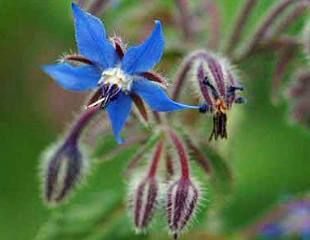
A herb popular with bees, especially honey bees, it is a self seeder with attractive delicate blue flowers. An ideal companion plant into a veg plot or herb garden to attract bees for pollination.
Pause to watch the bees
Very often the plants which attract bees and pollinators are sun loving, which is a problem if you have a shady garden and want to attract pollinators. In the first video is Persicaria amplexicaulis, common name, Red Bistort, which is a shade loving perennial loved by bees as you can both see and hear on the video.
The second video proves the old adages, Bees love blue. Here the bees are buzzing around the Geraniums and Alliums on a warm summer's day.
Bees and Butterflies are attracted to simple flowers which include wildflowers which will attract all sorts of pollinators. It is easier than you may think to create a small patch of wildflowers by using a pre sown impregnated mat which makes a nice wildlife friendly alternative to traditional bedding plants.
More ideas for wildlife friendly plants
Spring flowering plants attractive to Bees

